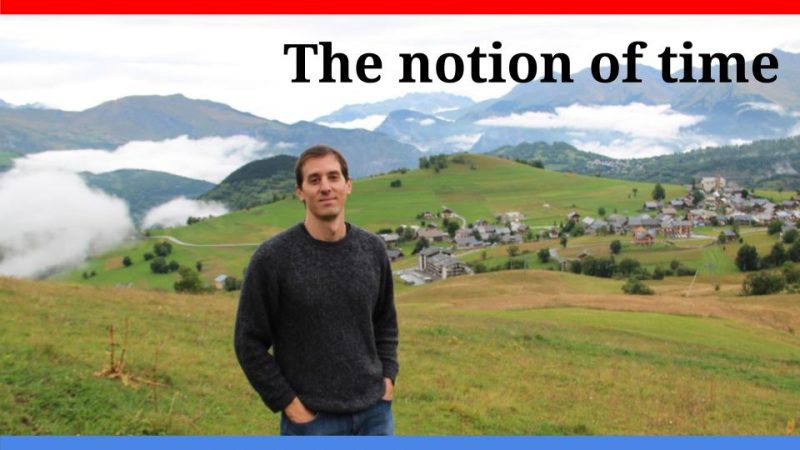Children sometimes feel like minutes last for hours, while adults feel like hours last for minutes. We live in the continuum of time, a unit that can be more of less intuitive to understand and measure. In this post we discuss a few notions. What is time?

Time flies
We often hear from our grandparents first, then our parents, then ourselves saying that time accelerates as we go through life. We say that time flies. When we’re a kid a minute can look like an hour, and once we’re adults an hour can feel like a minute. We have more to do than there appears to be time available. This impression of being in catch-up mode grows with the constant interruptions of modernity. Yet, time remains very constant. Atomic clocks measure the passing of time, and other than small deviations due to laws of physics and the movement of stars, planets and galaxies that we cannot detect at our human scale, time does not accelerate. We only have the perception, a notion of time that accelerates.
A fourth dimension
We can also easily represent in our mind and on a piece of paper the 3 dimensions of space: height, width, length. Adding a 4th dimension can be non-trivial. We can look at snapshots in movement, a series of change. That’s how some observers define time: a series of changes. Mathematicians can also use equations with 4 dimensions. But the time dimension can remain a bit abstract when it comes to representing it.
Memories as the recollection of time
Time is stored in our brains through successive memories. Our memory is the witness of our awareness, the recording of perception. At the individual level much of life expresses itself in the form of awareness: the colors we see, mobile and immobile objects, and the stimuli that come from these experiences. But do our senses represent the passing of time? A group of MIT scientists recently conducted a study in which they implanted a false memory in the hippocampus of mice. We can alter the perception of time artificially. Likewise, other factors like aging and other difficulties in the recollection of memories can change our notion of time.
Tiny moments
There are cases where the lifespan of certain events is so short our senses cannot even detect them. Consider the Higgs boson particle, with a lifespan of 1.56×10−22 s. It’s the fraction of a fraction of a second, that only the most precise tools available today are still learning to measure. The point is, can we imagine, can we realize what 1.56×10−22 s means? It is so short.
Long moments
Consider the opposite. It’s estimated that the universe has an age of 13.8 billion years. And yet the big bang is only as far as we can see. It could be the origin of the universe, or there could well be something prior to that event. Astrophysicists call it a horizon: it’s as far as science can see. There is no data prior to that, which does not exclude that something could have preceded it. Just like it’s hard to imagine the length in time for the Higgs boson, can we imagine what 13 billions years mean given the time frames from human civilization? All written records only go back to a few thousand years. As much as civilization can appear as an immense amount of time, it is a drop in the ocean of time in the universe.
Traveling
Experiencing time travel is possible. Go to a museum where you can observe fossils. You will take a trip to millions of years back in time. Paleontologists and biologists are retracing the story of our planet and how life evolved. Looking through a telescope allows you to go back in time also, as light takes time to reach us, and many of the far-way star systems and galaxies we can see today are a representation of how they were millions of years ago.
Meditating
Back to the notion of time, and whether time flies: turn off notifications from electronics for a moment. Find some place calm to breathe slowly and meditate. Find thankfulness for the present moment. This is the gift life made to us. The gift of awareness and the gift of time.

Leave a Reply